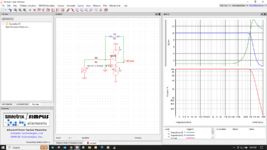fpmkh0
Newbie level 6
Hi,
I have a basic question. If I want to implement a filter (first order) using opamp, I wrap a parallel RC around the opamp as shown below. Let's say I want to have a gain of 0dB (RF=RI). If I have a healthy phase margin, does it matter if my UGB is very close to my BW of interest for my filter? In another word, why do people say UGB must be much larger than the desired BW? Except for phase margin, what else do I need to look for? For example, if my UGB is 200MHz and my filter BW is 160MHz, while my phase margin is 60 degrees, is there anything that I need to look for? What is the potential issue with having a UGB so close to my filter BW? Thank you.

I have a basic question. If I want to implement a filter (first order) using opamp, I wrap a parallel RC around the opamp as shown below. Let's say I want to have a gain of 0dB (RF=RI). If I have a healthy phase margin, does it matter if my UGB is very close to my BW of interest for my filter? In another word, why do people say UGB must be much larger than the desired BW? Except for phase margin, what else do I need to look for? For example, if my UGB is 200MHz and my filter BW is 160MHz, while my phase margin is 60 degrees, is there anything that I need to look for? What is the potential issue with having a UGB so close to my filter BW? Thank you.
